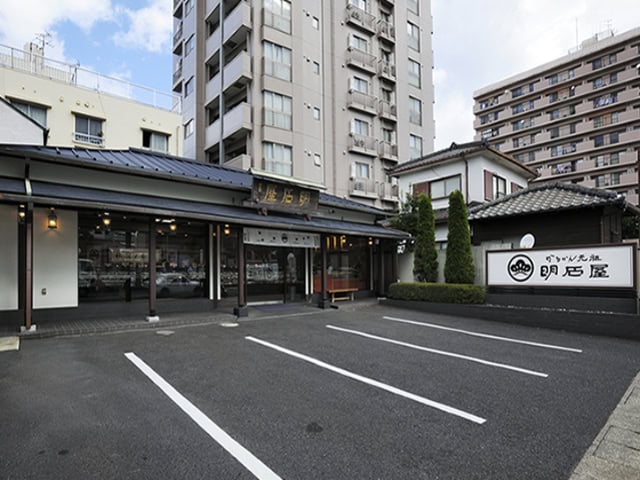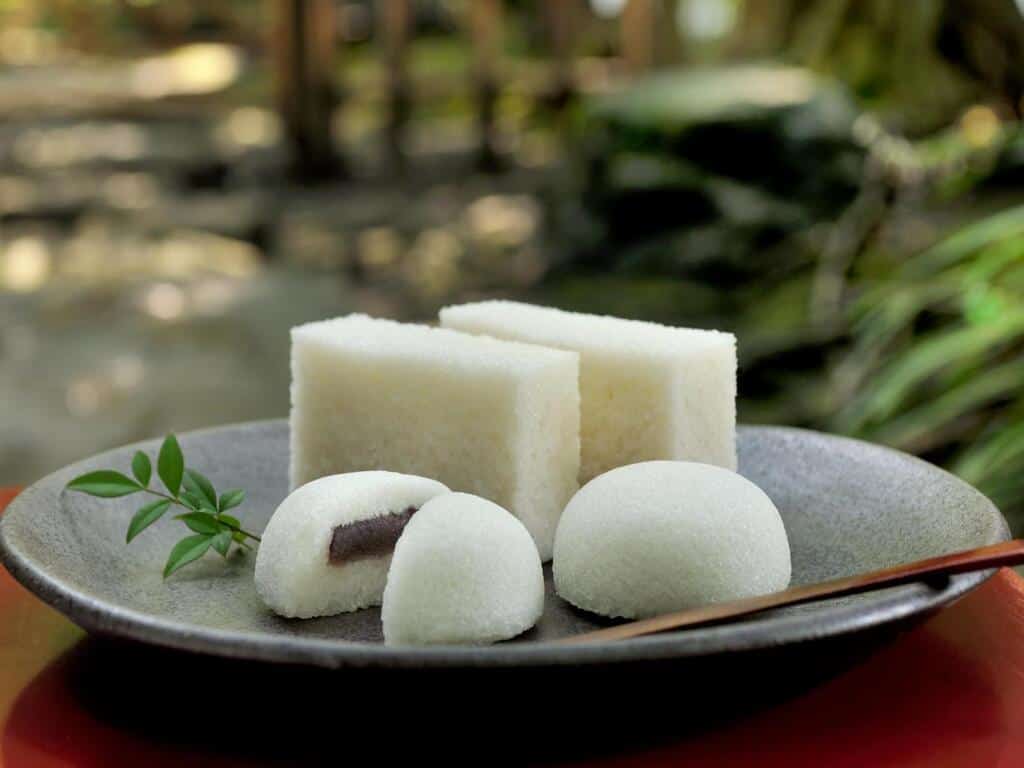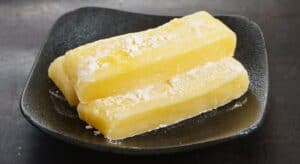With Japan’s wide range of Japanese confectionery, you would think that we may have listed everything here on Food in Japan. Hold your horses as we talk about Karukan, a Japanese dish that was born 300 years ago, and why it deserves a place in your culinary adventures.
What is Karukan?

Karukan is a traditional Japanese confectionery that is famous for its simplicity. Produced in Kagoshima Prefecture and other parts of Kyushu and Okinawa. This sweet also represents the essence of the local culinary traditions through generations.
Made from karukan rice flour powder, sugar, and grated Japanese yam (raw material for making “kakan”). Water is added to the blended ingredients and the mixture is then kneaded and steamed. Red bean paste is the center filling of it which makes this impeccable dish healthy and flavorful.
Moreover, found written in the menu from the Satsuma clan, the name “Karukan” is derived from the word “Karkan” which literally translates to “light kan”. Also, it’s possible that the origin of karukan is from Mainland Chinese and the Satsuma clan. In addition, it is of continental Chinese descent where the character (羹) translates to “geng”, a thick clear soup found in Chinese cuisine.
“Karukan” is actually a season of harvest for Japanese yams from autumn to winter. On the latter, the confection “Karan” is popular after the said season.
History of Karukan
During the first year of Ansei era, the famous confectionery “Karukan” was born. At the request of the lord of the domain, Shimazu Nariakiko. In celebration of the 50th birthday of Genroku, the 20th generation of the Shimazu family. Yashima (Akashi) Rokubei, a Banshu Akashi man who is famous in the confectionery business in Edo, is the creator of the said dish.
Rokubei focused on the high quality of Satsuma’s yams. Then, he continued his research by arranging good Satsuma rice for them and succeeded in creating an exceptionally delicious “karukan”. Akashiya’s conveys the warmth of the hometown to the present with carefully selected materials and traditional manufacturing methods. Its unique flavor and dignified white appearance also have a pure and innocent “Satsuma heart”.
In addition to this, there are other historical records that describes “karukan” and “yokan” in Satsuma domain. According to the said record, it was in 1686 (Teiko 3rd year) to 1715 (Shotoku 5th year) that in the menu for the feudal lord Shotoku 5, the said dishes were inscribed. One of the factors that led to the establishment of karukan in Satsuma Domain was that yams grew naturally on the Shirasu Plateau within the domain, and sugar produced in the Ryukyu Islands.
Karukan FAQs
- Is Karukan good for your health?
Many consumers have called Karukan as the “Vegan Marshmallow” of Japan, it is rich in protein, vitamins and minerals, and contains enzymes that have a tonic effect.
- When is Karukan usually made?
It is usually made during celebrations particularly Obon festival (Buddhist custom to honor spirits) where it is placed on altars. during this celebration, different colors of Karukan are also created.
- What is it best paired with?
Japanese people commonly pair Karukan with a hot cup of tea.
Is Karukan healthy?
Karukan, while indulgent, offers surprising health benefits:
- Rich in Vitamins and Minerals: Sweet potatoes, a key ingredient, are packed with vitamins A, C, and B6, as well as potassium and dietary fiber.
- Gluten-Free: Karukan is made from glutinous rice flour, which is naturally gluten-free, making it a suitable treat for those with gluten sensitivities.
- Low in Fat: With minimal added fats, Karukan is a relatively low-fat dessert option.
- Antioxidant Properties: Sweet potatoes and kinako are both rich in antioxidants, which help protect the body from oxidative stress.
Karukan Recipe

Ingredients
| 10-peices measurement | Measurements |
| Karukan Flour | 500g |
| Yamato sweet potato | 400g |
| Sugar | 300g |
| Water | 5 tbsp |
| Egg whites | 2 eggs |
| Anko (sweet beans) | 110g |
How to make Karukan?
Rinse well and peel. Grate the Yamato sweet potato, mix until smooth and runny.
Continue to stir until it gains a strong sticky consistency.
Add the egg whites, karukan flour, and water in that order and mix well.
After that, fill the containers (preferably burger-sized bowls) with the batter about 2/3 full.
Place some anko (sweet bean paste) on top.
Using a chopstick or some other utensil, cover the anko with the batter until the anko is likely at the center.
Steam for 15-20 minutes. Then, poke with a wooden toothpick. Also, make sure no batter sticks to the toothpick to ensure that they have steamed properly.
Lastly, remove it from the steamer.
Let them cool a little bit then use a toothpick to carefully pry them out of the molds. If you let them cool too much they will stick to the molds, so take them out while they are not too hot but not too cool.
Finally, you have homemade Kakuran, serve and enjoy.
Where to buy Karukan?
Luckily, Karukan is easy to buy in Japan. In fact, there are tons of shops that sell it just in Kagoshima alone. Akashiya Sweets in particular is the most popular store that has numerous branches in the said city.
Akashiya Sweets (Main Branch)

While there are many branches, the main store remains to be the favorite among locals and tourists. Since it’s close to Kagoshima station, it’s quite easy to find the place.
Akashiya Sweets (Near Central Station)

Meanwhile, Akashiya Sweets near the Central Station also offers a cozy dining area for its customers. Aside from Karukan, they also serve other Western desserts and even coffee.
Akashiya Sweets (Kamoike)

Akashiya Sweets (Taniyama)

On the other hand, the Taniyama store is a blockbuster hit! There’s usually a long queue to buy products from this branch. So, it’s best to come early for convenience.
Akashiya Sweets (Nakayama)

Akashiya in Nakayama boasts a beautiful and serene cafe. Of course, you can enjoy the sweetness of Karukan with a cup of coffee or tea. It’s perfect for those who just want to relax.
Meanwhile, for those outside Japan, specialized online retailers and Japanese grocery stores may carry Karukan, allowing you to savor this exquisite treat from the comfort of your home.
Conclusion
In conclusion, Karukan isn’t just a sweet treat; it’s a beautiful nod to Japan’s culinary legacy. Its special recipe, along with its health perks and deep-rooted history, also make it a confectionery gem that should find a spot in every dessert enthusiast’s heart. So, whether you’re relishing it on the peaceful streets of Kagoshima or delighting in it at home, Karukan promises an unforgettable experience for your taste buds.
















Comments